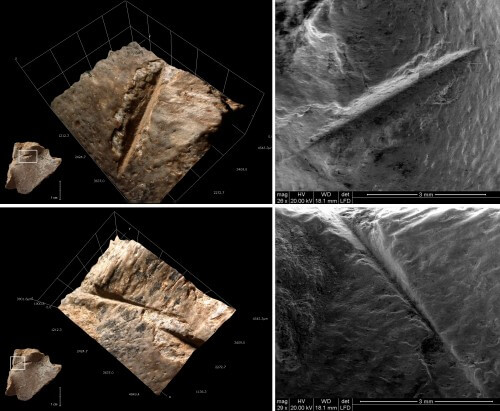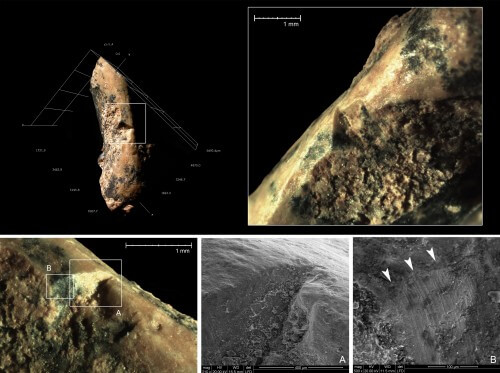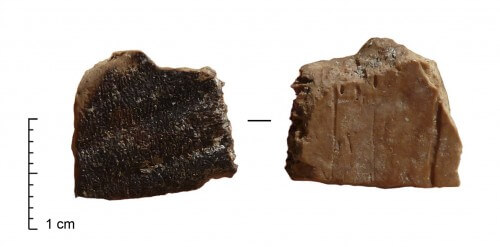The findings were published in the prestigious journal Quaternary Science Reviews



Researchers from Tel Aviv University found evidence that ancient humans from Kesem Cave in Israel used turtles as a nutritional supplement. The findings show that the inhabitants of the cave butchered, cooked and ate the turtles in a number of different ways, all this 400,000 years ago.
The new study was conducted by Prof. Ran Barkai and Prof. Avi Gofer from Tel Aviv University, together with Dr. Ruth Belasco from the National Institute for the Study of Human Evolution in Spain. The research was conducted in collaboration with Prof. Jordi Rossel and Prof. Pablo Snudo from the University of Tarragona in Spain, Dr. Lutz Christian Maul and Dr. Christer Smith from the Senkenberg Museum of Natural History in Germany. The results of the research were published in the journal Quaternary Science Reviews.
"Magic Cave, near the top of the eye, represents an extraordinary stage in the biological and cultural evolution of man," explains Prof. Barkai. "This phase, between 400,000 and 200,000 years before the present day, is also known throughout the southern Levant - from Kesem to Syria - but in terms of the preservation of the findings, Kesem Cave has no equal."
In Merat Kesem, discovered in 2000, the earliest evidence of the regular use of fire for roasting meat, very early evidence of recycling tools and the earliest evidence of the presence of a human type, who may be the ancestor of modern humans in our region, were found so far - a find that challenges the accepted concept of the origin of man The wise man from East Africa.
"As a rule," says Prof. Barkai, "the diet in Merat Kesem was based on hunting medium and large animals and plant food. The cave is full of bones of mammals, mainly donkeys, cattle, horses and pigs. Ancient humans fully utilized these calories, including bone marrow. In addition, it became clear from a previous research work, in which findings from the calculus found in the teeth of people who lived in the cave were analyzed, that they also ate plant food, apparently to a lesser extent than meat. Now we can say that there was another and interesting component in the diet of the inhabitants of the cave: turtles."
Humans have eaten turtles since time immemorial, but thanks to the special preservation of Kesem Cave, the team of researchers was able to analyze the remains of the turtles and reach surprising conclusions about how they prepared, cooked and ate them.
"In some cases they were roasted whole inside the armor. In other cases, the shell was cracked with a flint tool, and then the turtle was dissected. Turtles were eaten in Kesem Cave for the entire 200,000 years of human habitation in the cave, when different cooking methods were used in different periods. We found bones of turtles, which are very small, with signs of cracking, both cutting marks and burning marks. This is an unusual find. After all, a turtle does not have to be dissected. This is not a donkey's leg. According to our calculation, a turtle of the type eaten in Merat Kesem provides, at most, 190 grams of meat - certainly a small amount of meat that can be eaten in a bite and a half. And yet these humans dismembered the turtles, with actual surgical cutting tools, as if to prepare French-style gourmet dishes from them."
Prof. Gopher points out that this evidence of turtle consumption raises new possibilities regarding the division of labor in Kesem Cave. Turtles are by nature slow animals, and they are not considered a challenging or profitable hunt like hunting donkeys or horses, but a type of harvest. From ethnographic evidence from hunter-gatherer societies, we know that different sectors of the group are responsible for obtaining different resources - the young men are often the ones who go on hunting expeditions for large animals. This may have been the case in the Magic Cave as well. Small animals, including turtles, were apparently collected by the elderly and children.
"Until a few years ago, many researchers assumed that only modern humans knew how to use the full range of natural resources, while ancient humans such as Homo erectus and Neanderthals only hunted large animals," Barkai and Gopher add. "Today we know that this is not accurate, and the new findings confirm that this is a prejudice. The ancient humans from Kesem Cave enjoyed a varied, balanced and tasty diet of steaks, bone marrow, plant foods, and from time to time even turtles - and all this 400,000 years ago. In fact, the fact that humans ate turtles for 200,000 years teaches us that the cave dwellers did not consume the turtle population, which has a low natural population. They knew how to use all the resources at their disposal, and also knew how not to use them up."

7 תגובות
It doesn't take a billion people to exterminate them from a small area
Turtles have armor designed to protect them from predators, but not from a bunch of primates roasting them.
The turtles survived there for a period of two hundred thousand years, sounds ridiculous compared to the rate of extinction today.
Also the turtles can be kept alive for long periods, when there is a lack of food.
Muti, not sure there were millions of people. Actually sure not. You are one hundred percent wrong. There is every chance that the turtles were not in danger of extinction because the ancient man ate them...
I'm not sure it's kosher
The turtles in the area were extinct in a short time
200,000 years ???? It's just an agricultural crop
And also to use all the resources that were available to them and not to use them up, this is agricultural cultivation
Moti
How exactly did you deduce that??
The fact that humans ate turtles for 200,000 years teaches us that the cave dwellers raised turtles for food.
This means they grew food for themselves, and they were farmers.
Contrary to what is claimed in the article, there is no contradiction between the findings and conventional thinking
In contrast to the place of origin of man.
The closest species to Homo sapiens sapiens (Homo sapiens idelto)
Lived 160-200 thousand years ago in East Africa, while the findings
In the cave they precede him. It should be remembered that both sexes, Neanderthals and Homo
Spies lived at the same time and are known to have undergone a separate evolution (and it is possible that this
This is also true for Homo erectus, which also lives at the same time as both sexes
above) that is, the hominids who lived in the cave were developed in some respects
Certain but were not "the real thing", this conclusion is reinforced
In that the Neanderthal genes that carry the human races were created
Africa was not penetrated into Africa, because if modern man was
Formed in Eurasia in a proven neighborhood with the Neanderthals (and from there
If the genome had been passed around the world, we would have found it in Africa
As we find in the Far East and Europe.
If we didn't find the Neanderthal genome in Africa -
A sign that the direction was one: out.